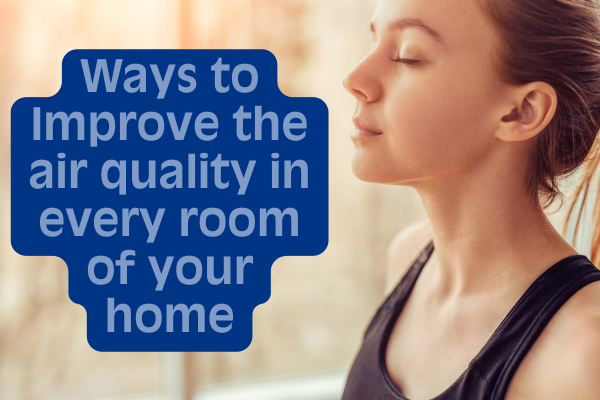Indoor Air Quality & Home Comfort Seasonal HVAC Tips

Many homeowners today have made the choice to go green by lowering their energy usage. As a result, homes are more airtight than ever before. While this is an effective way to conserve energy, it also means more pollutants are locked inside the home since the natural drafts created by air leaks no longer exist. To avoid creating an unhealthy living space, you should work toward improving indoor quality by following some relatively simple and inexpensive steps. Here, we’ll take a look at exactly why poor indoor air quality is something you should be addressing, and exactly how you can do that with help from Airtron.
According to the Environmental Protection Agency (EPA), the average American spends around 90% of his/her time inside. That’s pretty shocking on its own, but what’s even more disturbing is that the EPA also reports that indoor air pollutants can be anywhere from two to five times higher than what’s found in the outdoor air.
Why does this matter? It matters because indoor air pollution can have detrimental effects on your home and on the people who reside in it. These can include:
Indoor air quality is critical to your health and the health of your family. If you want fresh air, you’re first going to have to understand what’s contaminating your environment.
There are many sources of pollution in your indoor environment — in fact, there are literally hundreds of different types of pollutants in any given home. Check out the lists below to see what may be lurking inside your four walls.
There are many types of chemical pollutants that are typically released as gases inside your home. These can include:
Biological pollutants occur naturally, but certain conditions in your indoor environment can promote their growth. These types of indoor air pollutants include:
These pollutants infiltrate the home specifically through your HVAC system, and are generated by the combustion of gases that occur when your HVAC is running. They include:
It can be discouraging to realize there may be so much indoor air pollution inside your home. Fortunately, there are many actions you can take to make a positive change and clear the air, both on your own and with the help of a qualified HVAC technician.
An air purifier will remove a number of biological pollutants from your indoor environment, including dust and pet dander. They can also help clean the air of viruses and bacteria, which could help prevent their spread.
Be sure to always read the labels on your cleaning products to better understand what types of VOCs they may contain. When cleaning with harsh chemicals, opening the windows can release some harmful airborne irritants. You should also safely store paints, solvents, and pesticides in your garage or in an outdoor storage unit or shed.
When it comes to chemical pollutants and combustion byproducts, it’s critical to know if you have a dangerous level of buildup inside your home.
You should plan on testing for radon every two years, while carbon monoxide levels should be monitored on an ongoing basis with a carbon monoxide detector. Be sure to test your detector once a month to make sure it’s working properly to protect your indoor spaces.
A dehumidifier can keep the humidity levels in your home under control, which is especially important to those living in hot, damp climates where mildew and mold are likely to grow.
Mildew can cause some respiratory issues that can be easily mitigated with a dehumidifier. It can also prevent mold from growing and releasing mold spores into the air, which can cause serious illnesses and infections.
A more efficient heating and cooling system will reduce your overall carbon dioxide emissions and can keep your air cleaner. As a bonus, it will also help keep your energy costs low while providing tremendous positive health effects.
Be sure that you’re changing your air filter regularly to keep your HVAC system efficient. Use a HEPA filter designed to keep particles and pollutants from entering your home.
Here’s an easy and fun DIY: buy indoor plants! There are several houseplants that are known for their air-cleansing properties, like spider plants, pothos, Boston fern, and snake plants.
While you would need a significant amount of plants to truly purify your indoor air, they still offer many benefits in smaller quantities. They can also help improve the humidity levels in your home, which will keep the air cleaner.
Work with an HVAC professional to install a whole-house ventilation system. This will improve air flow and ensure as many pollutants are cleared out of your air as possible.
While you’re at it, evaluate your home’s existing ventilation around hearths, wood stoves, and fireplaces to ensure everything is properly ventilated. You can also make it a practice to use mechanical ventilation when needed, like turning on exhaust fans while you cook, shower, or wash the laundry.
Clean air is just a breath away. Follow the DIY tips listed here, and for the rest, trust Airtron to install high-quality products that keep your home comfortable and your family safe. For more tips on improving indoor air quality, contact us at Airtron Heating & Air Conditioning.